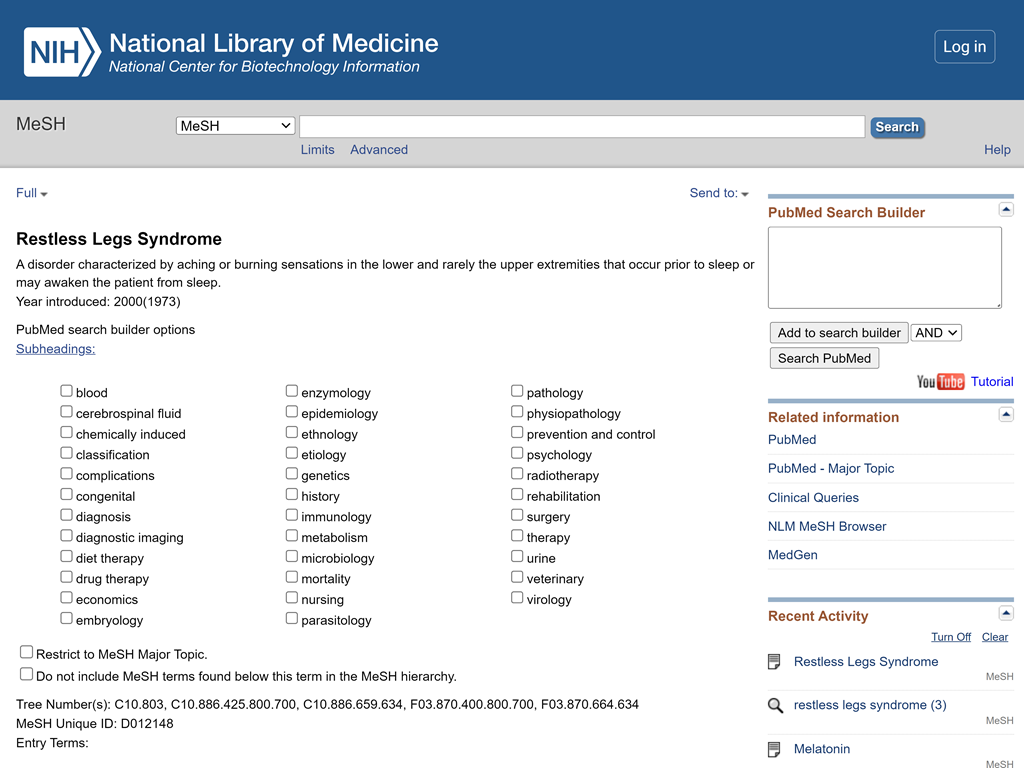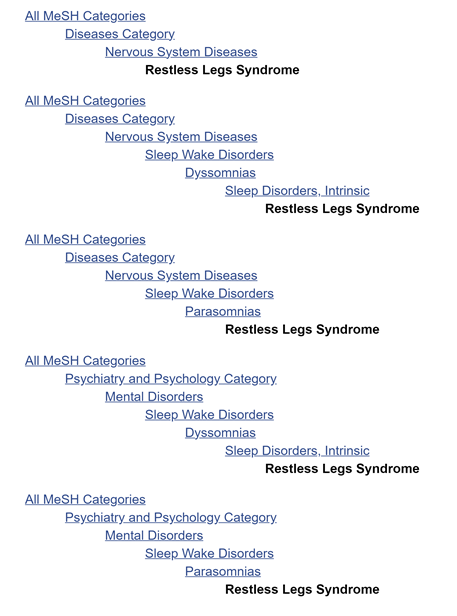Sidebars
Section-by-Section Tour of a MeSH Database Record
View the MeSH Database record for Restless Legs Syndrome.
| Section of MeSH Database Record | Explanation of Record Components |
|---|---|
| Restless Legs Syndrome | Preferred MeSH term for a concept: This is the term that you will see on MEDLINE records in PubMed. |
| A disorder characterized by aching or burning sensations in the lower and rarely the upper extremities that occur prior to sleep or may awaken the patient from sleep. | Scope Note: The scope note describes how the term is used for indexing or cataloging. This may or may not be the dictionary definition for a term. |
| Year introduced: 2000(1973) | Year Introduced: Searching with this term will retrieve records indexed from the earliest date shown. For more information, view the video "What do the Dates in MeSH Mean?". |
Subheadings: analysis - anatomy and histology - blood - cerebrospinal fluid - chemically induced - classification - complications - diagnosis - diagnostic imaging - diet therapy - drug therapy - economics - enzymology - epidemiology - ethnology - etiology - genetics - history - immunology - metabolism - microbiology - mortality - nursing - organization and administration - pathology - physiology - physiopathology - prevention and control - psychology - radiotherapy - rehabilitation - statistics and numerical data - surgery - therapy - urine - virology |
Subheadings: Lists the subheadings that can be used with this heading. Select subheadings for searching using the checkboxes. For more information about subheadings including scope notes, use the link from the section header. |
| Restrict to MeSH Major Topic. | Use this checkbox and use the Add to search builder function at the upper right of the screen to retrieve records where this concept was deemed a major topic of the article. |
| Do not include MeSH terms found below this term in the MeSH hierarchy. | Use this checkbox and use the Add to search builder function to eliminate records that include terms for more specific concepts under this one. USE WITH CAUTION, this function often eliminates relevant results. |
Entry Terms:
|
Entry Terms: Synonyms for the heading, or terms that are sufficiently close in scope so that this preferred term is used. A search of any of these terms in PubMed will automatically retrieve citations for articles indexed with the preferred MeSH heading. |
| Previous Indexing: Paresthesia (1966-1972) | Previous Indexing: Use this term for searching this concept prior to the use of the current heading. For more targeted results, combine with the indexing dates (e.g., Paresthesia AND 1966:1972[mhda]). See the course, MeSH Changes and PubMed Searching for details. |
MeSH Hierarchy: The position of the term in the hierarchy. Many terms (like this one) are positioned in more than one branch. |

